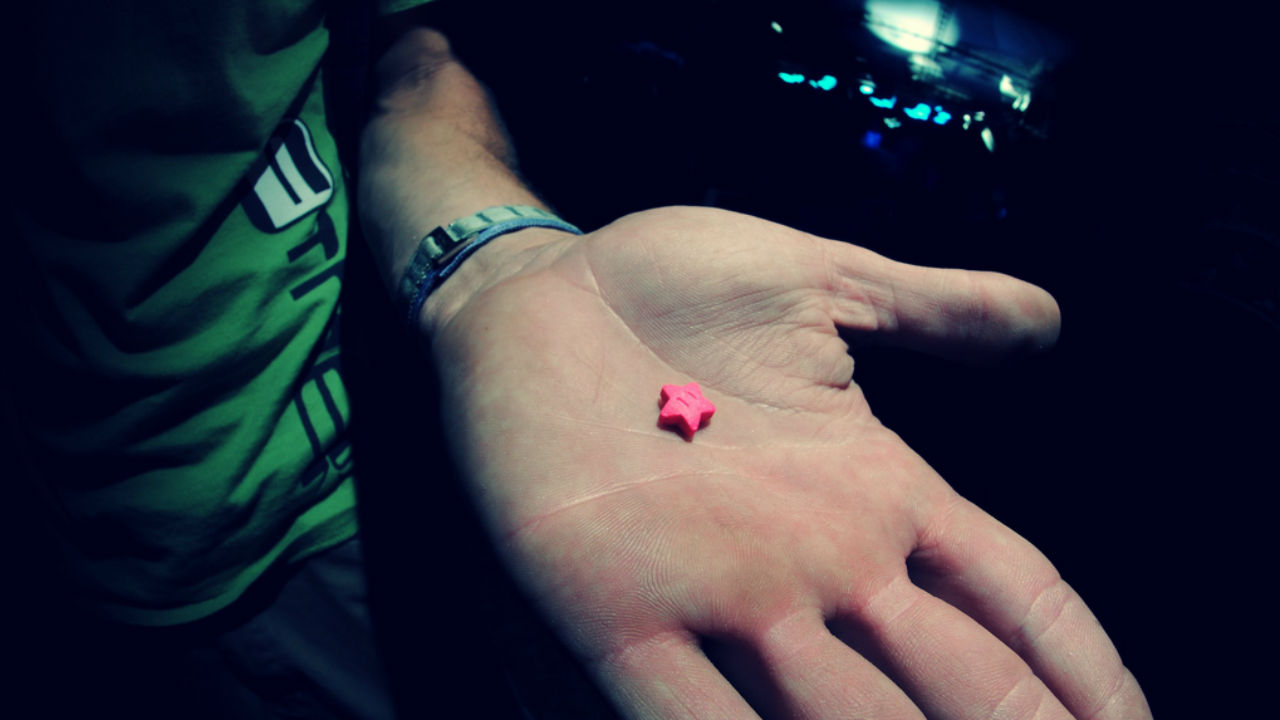
A guide to taking MDMA for the first time
Know the facts before dropping
Taking MDMA for the first time can be scary and unsafe if done incorrectly. It's important to know exactly what will happen in your body after dropping and what to do if things start going wrong.
This guide will help you to understand how much you should be taking and how to avoid getting it wrong.
What is MDMA?
MDMA is a Class A drug, also known as molly, mandy, ecstasy or MD. It comes as either as a crystal, powder – coloured anywhere between brown, yellow, off white and white – or as a pill.
It is a synthetic drug that acts as a stimulant and hallucinogen. It makes you feel more energised, and enhances your perceptions of the surroundings. MDMA makes you feel higher levels of empathy and love for those around.

How much should I take?
The dosage guideline is your weight in kg, plus 50 = total dosage in milligrams for the session. So if you weigh 50kg, you should take 100mg of MDMA.
However this might not be enough if you're used to taking MDMA, so you can use 1.5x this number. If you weigh 50kg, you would take 150 mg of MDMA.
Always wait at least three hours before taking another dose if you haven't felt the effects yet.
How do I take MDMA?
MDMA comes in many forms. You can get it in the form of an ecstasy pill that you swallow, snort or dab it in powder form, or wrap it in Rizla, or any paper that will dissolve in your stomach, and swallow it.
How much you should take depends on the form you're taking it in.

How to know if your MDMA is pure
You should get your MDMA from a reliable source your friends have used before and not had any adverse effects. You can also use an MDMA testing kit.
How long do the effects last?
The main effects last for three hours, but the minor effects will take seven hours to go away.
How much water should I drink on MDMA?
Drink up to one cup per hour (250 ml) of, or up to two cups (500 ml) if you are dancing or in a hot environment

How to avoid heat stroke
Avoid dancing constantly in a hot crowd and drink the recommended amount of water.
Signs of heat exhaustion:
1. Heavy sweating
2. Weakness
3. Cold, pale, and clammy skin
4. Fast, weak pulse
5. Nausea or vomiting
6. Fainting
Can I take MDMA if I have a condition?
Avoid if you have any of these contraindicated conditions:
1. Cardiovascular disease
2. Cerebrovascular disease
3. Uncontrolled hypertension
4. Malignant Hyperthermia, anhydrosis, central core disease, or any condition that increases the risk of heat stroke or hyperthermia. This includes if you currently have a fever or if you know you are particularly heat sensitive.
5. Susceptibility to seizures
6. Liver problems
Do not take MDMA with these drugs
1. MAOIs (e.g. Nardil, Parnate, Marplan, Ayahuasca) within the last three weeks.
2. 5-HTP.
3. St John’s wort taken recently.
4. CYP2D6 inhibitors.
5. Drugs that increase heart rate or blood pressure (e.g. many asthma medications, stimulants like cocaine, amphetamine, caffeine), DXM (Robitussin), stomach acid mediciations, sedatives (alcohol, opioids).

What should I do if I start to feel unwell?
Find a cool, safe, quiet environment and let someone you trust know how you are feeling so they can stay with you. They should be checking your temperature and pulse. Drink some water, but not too much.
How to deal with the comedown
These are the known comedown cures for MDMA:
Orange juice
Vitamin C is necessary for the synthesis of serotonin and so drinking orange juice before and after doing MDMA can shorten the comedown.
Marmite
Marmite can aid your body's production of serotonin. It contains a substance called tryptophan, an amino acid which is one of the building blocks of serotonin.
5-HTP or 5-hydroxytryptophan
5-HTP is one of the major ingredients your body needs to to make serotonin and you can buy it in a bottle.





















